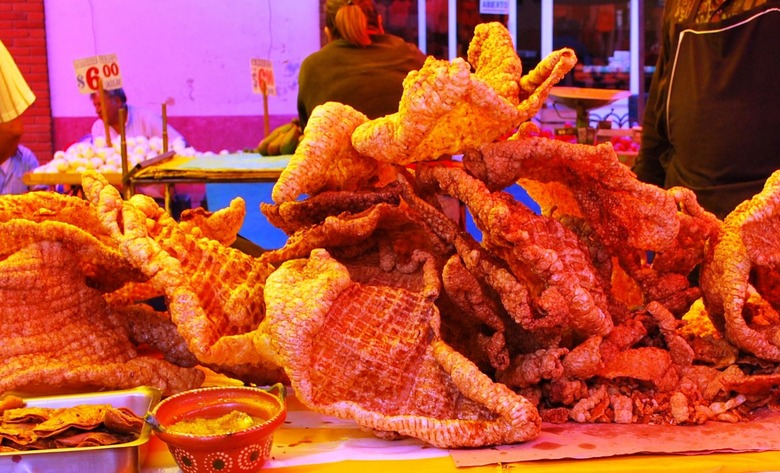5 Ways Animal Skin Is Eaten Around The World
Animal skin is something that you probably don't want to eat. It's skin, after all, which most people wouldn't really associate with food. But in many parts of the world, the skin of animals, especially chickens, pigs, and even cows, are commonly eaten, and while you've most likely eaten chicken or turkey skin, that's not exactly considered to be extreme. Here are five ways that animal skin is eaten around the world.
Latin Countries: Chicharrón
Season and deep-fry pork skin, and you'll end up with a crunchy, crispy snack that's indescribably delicious. Popular in just about every country with Spanish influence, it's most commonly made with pork but can also be made with chicken, mutton, or beef.
United States and Europe: Pork Rinds

A byproduct of lard rendering but also a popular snack food, pork rinds are rendered and dried skins of pork. When they hit the deep-fryer, they puff up and become incredibly crunchy.
Jamaica: Cow Skin Soup

Cow skin is popular in Jamaican cuisine, and is traditionally cooked in soups and stews. This soup is usually made with root vegetables, Scotch bonnet peppers, and chunks of cow skin; it's all cooked until the skin has softened. Cow skin soup is renowned as a hangover cure.
West Africa: Sopa Canja
In Western Africa, cow skin is a popular addition to many soups and stews. Before being added to soups, small squares of cow skin are boiled with salt and baking soda for about 2 ½ hours, or until softened.
Hawaii: Kalua Pig

Whole roast pig is popular wherever pigs are found, but in Hawaii, the preparation is an art form. Entire pigs are slowly roasted for hours, and special attention is given to the skin, which at the end of the process is crispy, crunchy, and so full of collagen that it leaves your hands sticky.
